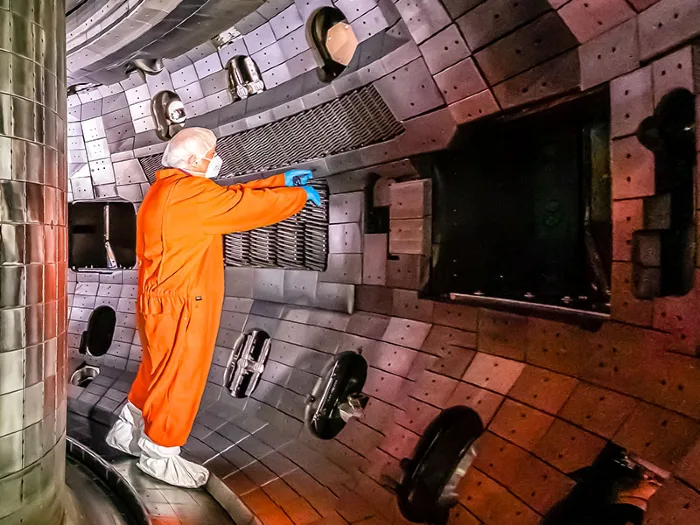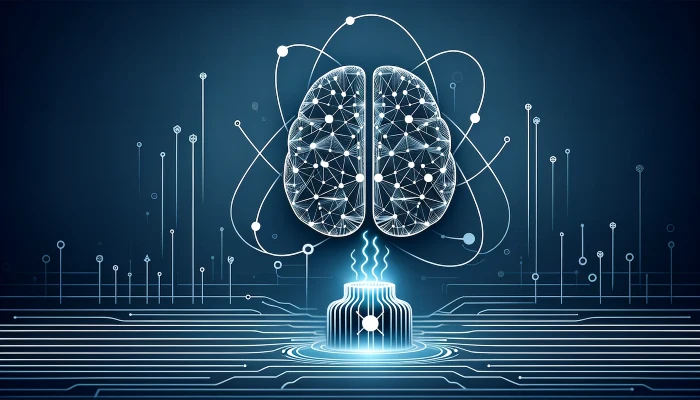Scientists are on the verge of a breakthrough that could revolutionize the quest for clean, limitless energy. At the heart of this advancement is a cutting-edge AI model developed by Princeton University and the Princeton Plasma Physics Laboratory. This innovation promises to overcome one of the most daunting hurdles in nuclear fusion: keeping plasma stable and contained within reactors.
The Plasma Puzzle
Nuclear fusion, the process powering the sun, involves merging atoms to release massive amounts of energy. Achieving this on Earth means overcoming immense challenges, such as generating more energy than the process consumes and designing materials that can withstand the extreme conditions inside a reactor. A critical issue is preventing plasma, the superheated fuel for fusion, from becoming unstable and escaping its magnetic confinement in tokamak reactors. These reactors, shaped like a donut, use powerful magnets to compress and spin plasma, maintaining the fusion reaction.
A Breakthrough in Plasma Control
The Princeton team’s AI model is a game-changer. It can predict “tearing mode instabilities” in plasma—disruptions that can prematurely end the fusion reaction—300 milliseconds before they occur. This brief window allows for adjustments to be made to keep the plasma stable. The model’s success lies in its training: it learned from real data gathered from previous fusion experiments.
Azarakhsh Jalalvand, a co-author of the study published in the journal Nature, shared, “We don’t teach the reinforcement learning model all of the complex physics of a fusion reaction. We tell it what the goal is—to maintain a high-powered reaction—what to avoid—a tearing mode instability—and the knobs it can turn to achieve those outcomes. Over time, it learns the optimal pathway for achieving the goal of high power while avoiding the punishment of an instability.”

This approach has already been tested at the DIII-D National Fusion Facility in San Diego, demonstrating the AI system’s ability to control the reactor’s power input and the plasma’s shape effectively.
The Significance of This Advancement
Jaemin Seo, another co-author, emphasized the importance of their method, stating, “Our approach allows us to predict and avoid those instabilities before they ever appear.” This proactive strategy marks a significant leap from previous methods, which only managed to suppress instabilities after they occurred.

However, the team acknowledges that tearing mode instabilities are just one piece of the puzzle. Plasma can become “unhinged” in numerous ways, presenting a variety of challenges to maintaining a stable fusion reaction. Despite this, addressing tearing instabilities is a crucial step towards achieving sustainable, clean fusion energy.
The Role of AI in Fusion’s Future
Federico Felici, a physicist not involved in the study, highlighted the broader implications of AI in fusion research: “There’s a huge potential to unleash AI to get better control and to figure out how to operate such devices in a more effective way.” His optimism reflects a growing consensus that AI will be instrumental in solving fusion energy’s most complex problems.
Looking Ahead
The Princeton team views their work as a proof-of-concept, still in the early stages of refinement. They are hopeful that further fine-tuning will enable their AI model to be applied to other reactors, optimizing reactions and energy harvesting.
Chijin Xiao, who was not part of the study, remarked on the broader challenge of controlling plasma disruptions: “Currently there’s experimental evidence to control those [plasma disruption] scenarios but those scenarios are so broad that with the current knowledge and data it’s still wait and see.”
More To Discover
- Solving Island Energy By Going To The Past: 140-Year-Old Technology Offers New Hope for Clean, Unlimited Power
- Tesla’s Fremont Factory Is Ignoring 112 Notices of Pollution Violations
- Greenwash Update: Checking In On Coca-Cola and Starbucks’ Previous Environmental Claims
- LanzaJet’s Sustainable Plant In Georgia Will Produce 10 Million Gallons of Eco-Friendly Jet Fuel to Tackle Airline Emissions
This breakthrough represents a beacon of hope in the quest for fusion energy, suggesting that the dream of a clean, unlimited power source may be closer than ever before.
Source: Nature


















